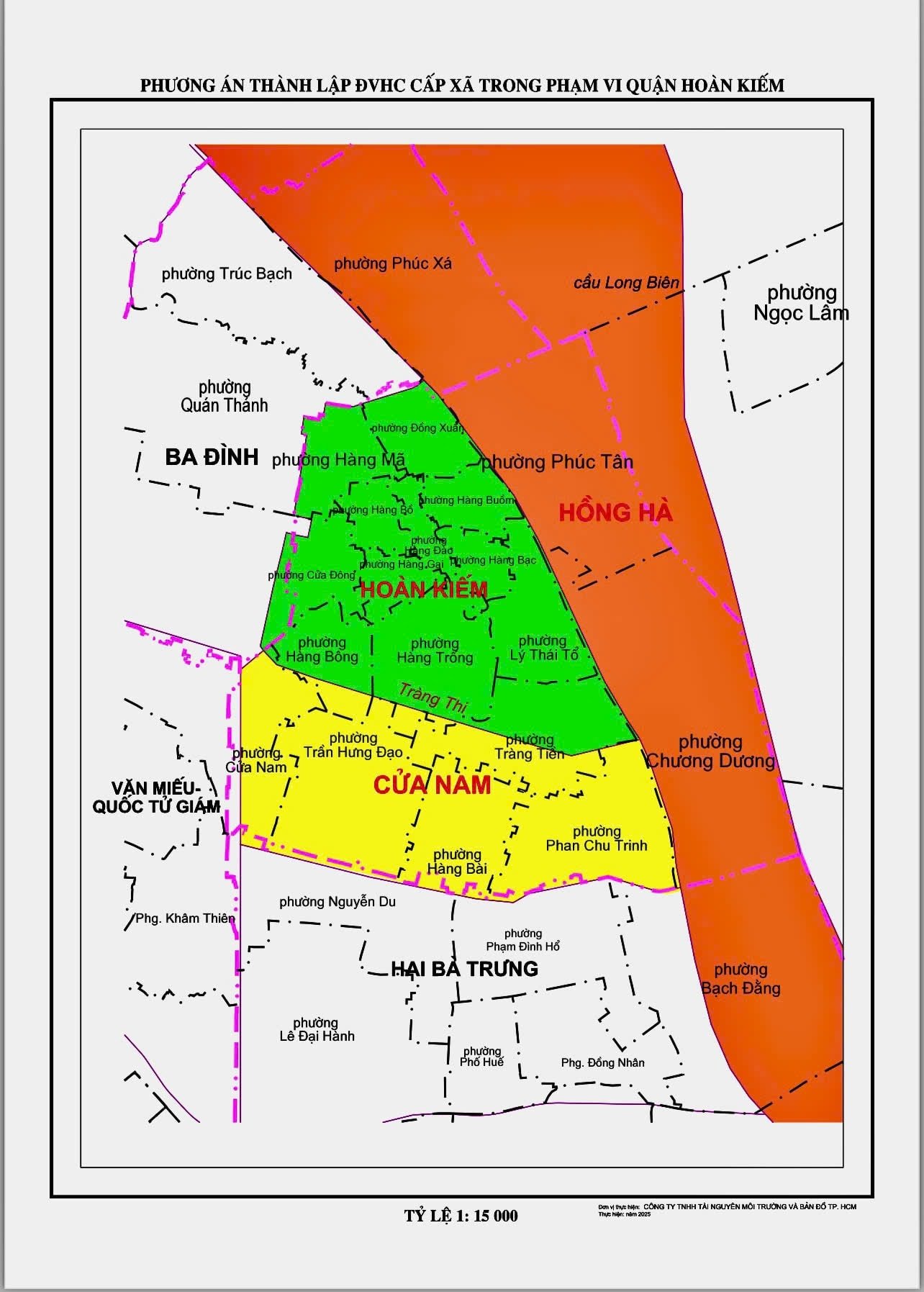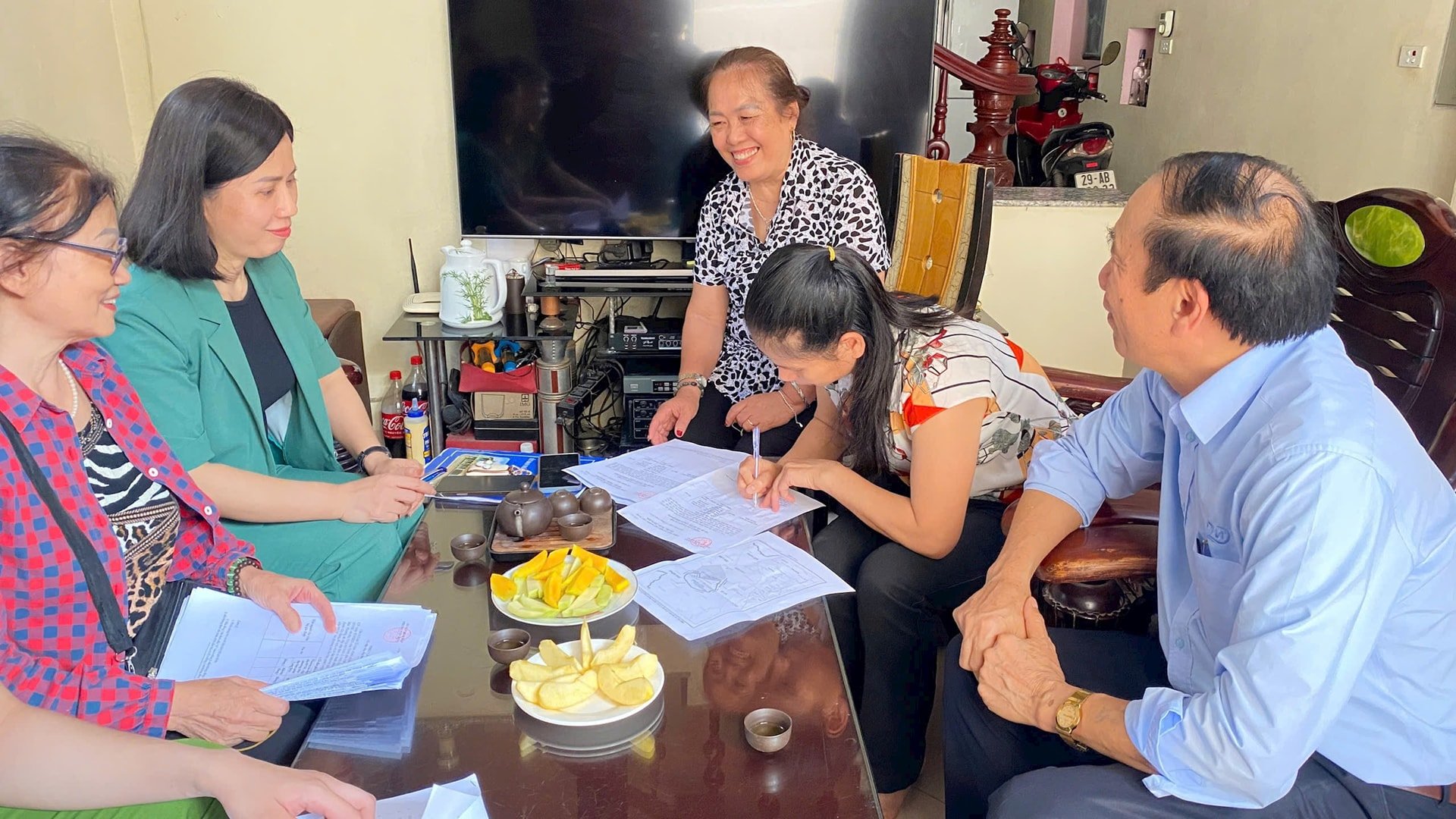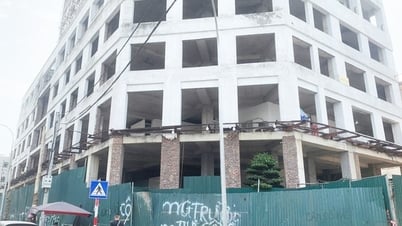Affirming strategic vision and political determination
For many years, Vietnam's administrative apparatus has remained cumbersome, multi-layered, and duplicated in functions, reducing the effectiveness of state management and wasting social resources.
Many localities are small in size, have low population, and are located close to each other, but many district-level administrative units exist in parallel, leading to the division of development space, dispersion of investment resources, and difficulties in planning regional and neighboring areas.
According to Resolution 11 of the 13th Central Committee and Plan No. 47-KH/BCĐ dated April 14, 2025 of the Central Steering Committee on the implementation of the arrangement and merger of provincial and communal administrative units and the organization of a two-level local government system, from July 1, 2025, 696 districts, towns and cities will cease operations and the commune level will be reduced by about 60-70% of the total 10,035 units.
The reorganization of commune-level administrative units and the eventual abolition of the district level is an inevitable step, in line with the modern development trend, meeting the practical requirements of the country. This policy not only aims to reduce the number of intermediary agencies in state management, but also aims to build a dynamic administration, close to the people, serving the people better.

Immediately after the Central Government issued the policy, localities across the country took urgent, proactive and drastic action. Currently, provinces and cities across the country have had plans to reorganize commune-level administrative units and at the same time, they have started to collect public opinions. Hanoi City is exemplary and took the lead in reorganizing 526 communes, wards, towns and townships into 126 commune-level administrative units, reducing by more than 76%, higher than the target required by the Central Government.
With the arrangement plan, the commune-level administrative units have larger populations, more favorable natural conditions, and more synchronous infrastructure. This is a revolution in the organization of the state apparatus, reflecting the strategic vision and very high political determination of our Party and State.
The momentum of implementing the administrative unit arrangement has spread from the central to local levels, from leaders to the people. The working atmosphere in working groups, conferences to deploy or collect public opinions has been urgent and exciting, clearly demonstrating a sense of responsibility and high consensus. Almost everywhere, when receiving the opinion forms, people have enthusiastically and excitedly accepted the Party's policy and expressed high consensus with the arrangement plan that has been carefully researched by provinces and cities, ensuring scientific results. In particular, Hanoi city plans to complete collecting public opinions on the plan to arrange commune-level administrative units tomorrow, April 21.
It is undeniable that the positive response of the people is a solid foundation for the success of this reorganization. Initial concerns about the name, headquarters, history of formation, etc. were quickly resolved by the transparency, openness, and persuasion in each step of the government. People have understood that this is not a simple “separation - re-merger”, but a process of restructuring the development space, opening up opportunities and conditions for strong development in each locality and the whole country.
The journey towards modern and people-friendly governance
The two-tier local government model, with a provincial and communal structure, has proven effective and popular globally due to its ability to balance macro-management at the provincial level and direct service to the people at the communal level. This structure facilitates unified policy making at the provincial level, while ensuring flexibility and responsiveness to the diverse needs of each community at the communal level. The elimination of an intermediate level helps streamline the administrative apparatus, reduce costs and increase transparency in management.

From a theoretical and practical perspective, abolishing the district level and streamlining commune-level administrative units is not only an administrative reform, but also an innovation in the local government organization model in a modern direction, in accordance with the operating rules of the rule of law state and socialist-oriented market economy.
In reality, the district level is facing the possibility of reducing its “regulatory” management role, when information technology develops, transportation becomes convenient, and connections between the provincial and communal levels become easier than ever. Many countries in the world have succeeded in building a two-level administrative model - central and local (organized from the communal level up) while still ensuring effective management and service to the people.
One of the most important benefits of administrative unit arrangement is to expand the development space at the commune level - the level of government closest to the people. When the commune is expanded in terms of population, area and resources, the commune-level government will have access to greater development opportunities, from infrastructure investment, attracting businesses, to implementing social security, education, health care policies, etc. more effectively.
At the same time, when the district level no longer exists as an intermediate level, the relationship between the province and the commune will be more direct, shortening the time to issue and implement policies. This will not only help “liberate” resources that are being held back by cumbersome administrative procedures, but also improve the transparency, accountability and service quality of the state apparatus.
In particular, in the context of digital transformation and the development of digital government taking place strongly, a compact, flexible, and strongly decentralized apparatus will be the ideal foundation for realizing the goal of sustainable and inclusive development. With greater authority, more stable finances, and improved management capacity, communes, especially those in remote, isolated, and ethnic minority areas, will have the opportunity to "take off", narrowing the development gap with large cities.
The rearranged administrative space also opens up the possibility of more comprehensive planning and synchronous investment. The merged communes can jointly build modern administrative - cultural - commercial centers, instead of each commune having a small, wasteful and ineffective headquarters. Regional linkages at the commune level are also more practical, helping to promote the potential of tourism, agriculture and local industry in a systematic and long-term manner.
It can be said that eliminating the district level is not just eliminating a management level, but paving the way for a new governance system, in which the commune is no longer a “low level” but becomes the “main level” in connecting people with the government, in implementing development policies, and in mobilizing the internal strength of each local community. This is a brave and wise step, for a strong and prosperous Vietnam.
The restructuring of commune-level administrative units, moving towards ending the operation of district-level administrative units, is a major decision, requiring high consensus, long-term vision and strong political will.
With the enthusiastic atmosphere across the country, the participation of the political system, and especially the trust and consensus from the people, we have enough basis to believe that the revolution of streamlining the apparatus will be successful, leaving a deep mark on the journey of building a modern, effective, efficient, for-the-people and close-to-the-people administration.
Source: https://hanoimoi.vn/bo-cap-huyen-mo-rong-quy-mo-cap-xa-buoc-chuyen-manh-me-vi-tuong-lai-phat-trien-699705.html


![[Photo] Many people in Hanoi welcome Buddha's relics to Quan Su Pagoda](https://vphoto.vietnam.vn/thumb/1200x675/vietnam/resource/IMAGE/2025/5/13/3e93a7303e1d4d98b6a65e64be57e870)


![[Photo] President Luong Cuong attends the inauguration of the international container port in Hai Phong](https://vphoto.vietnam.vn/thumb/1200x675/vietnam/resource/IMAGE/2025/5/13/9544c01a03e241fdadb6f9708e1c0b65)
![[Photo] Prime Minister Pham Minh Chinh receives Ambassador of the French Republic to Vietnam Olivier Brochet](https://vphoto.vietnam.vn/thumb/1200x675/vietnam/resource/IMAGE/2025/5/13/f5441496fa4a456abf47c8c747d2fe92)
![[Photo] President Luong Cuong awarded the title "Heroic City" to Hai Phong city](https://vphoto.vietnam.vn/thumb/1200x675/vietnam/resource/IMAGE/2025/5/13/d1921aa358994c0f97435a490b3d5065)


















































































Comment (0)